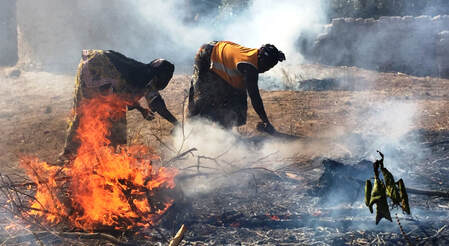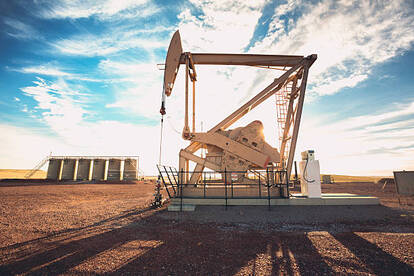The Facts About Climate Change & Health
Air Pollution
An estimated 7 million people die each year from causes related to
air pollution, and this number is increasing (Fuller, 2022)
- Exposure to air pollution increases the mortality from lung cancer, including in people who have never smoked. (Hamra 2014) (Eckel 2016) (Ou 2020)
- The International Agency for Research on Cancer (IARC) classified outdoor air pollution and particulate matter less than 2.5micrograms/meter3 (PM2.5) as carcinogenic to humans. (Loomis 2013)
- Impact of climate change is disproportionally worse on underserved populations. (Shultz 2020)
- The Global Burden of Disease study attributed 15% of all lung cancer worldwide to PM2.
Wildfires
- Exposure to wildfire smoke was associated with worse overall survival following NSCLC surgical resection (Zhang, 2023)
- Occupational exposure as a firefighter was classified as “carcinogenic to humans” (Group 1) based on “sufficient” evidence for cancer in humans. (Demers, 2022)
- While the majority of large fires occur in the western United States, a majority of smoke-attributable US mortality and morbidity occur outside the West (O'Dell, 2021)
"As recognized by over 230 medical journals around the world, the health effects of climate change are catastrophic, and will impact our ability to treat and care for cancer patients."--Wise 2021
Extreme Weather & Access to Care
Events such as hurricanes, tsunamis, earthquakes, mud slides, and tornadoes can have devastating consequences on the care of patients with cancer. Extreme weather events can result in:
Events such as hurricanes, tsunamis, earthquakes, mud slides, and tornadoes can have devastating consequences on the care of patients with cancer. Extreme weather events can result in:
- Treatment delays or interruptions for the initiation of breast, colorectal, head and neck cancers, and gynecological cancers can result in worse survival outcomes (Man 2018)
- Infrastructure damage due to flooding can result in loss of power, electricity, water, radiotherapy equipment, clinical facilities, medical records and access to staff, as evidenced by Hurricane Katrina in 2005. (Man 2018)
- Extreme weather events can cause Interruption of drug supply chains and consequent shortages, as occurred in 2018 when Hurricane Maria struck Puerto Rico which caused the closure of factories that supplied the bulk of small-volume intravenous bags in the continental United States. (Man 2018)
- Damage to communication systems and medical record losses substantially disrupt oncology care. (Man 2018)
- Disruptions to cancer care can lead to a decrease in cancer screening, resulting in more patients presenting with advanced disease and an estimated increase in 10,000 excess deaths from breast or colorectal cancer. (Sharpless 2020)
- Damage to communication systems and medical record losses substantially disrupt oncology care. (Man 2018)
- Disruptions in treatments, such as those that occur in hurricane emergencies, resulted in worse outcomes in patients with Stage 3 non-small cell lung cancer undergoing definitive radiotherapy. (Nogueira 2019)

"The impact of climate change is disproportionately worse on Underserved Populations who contribute the least." (Tessum 2021 & Shultz 2020)
"The impact of climate change is disproportionately worse on Underserved Populations who contribute the least." (Tessum 2021 & Shultz 2020)
Cancer

Air pollution is responsible for roughly 13%-15% of lung cancer worldwide, including in people who have never smoked.
Exposure to air pollution increases the mortality from lung cancer, including in people who have never smoked. (Hamra 2014) (Eckel 2016) (Ou 2020)
Long term exposure to NO2 air pollution has been associated with an increased risk of breast cancer (Amadou, 2023; Praud, 2023)
The incidence of childhood acute lymphocytic leukemia is correlated inversely with distance from fracking sites. (Clark 2022)
Exposure to air pollution increases the mortality from lung cancer, including in people who have never smoked. (Hamra 2014) (Eckel 2016) (Ou 2020)
Long term exposure to NO2 air pollution has been associated with an increased risk of breast cancer (Amadou, 2023; Praud, 2023)
The incidence of childhood acute lymphocytic leukemia is correlated inversely with distance from fracking sites. (Clark 2022)

